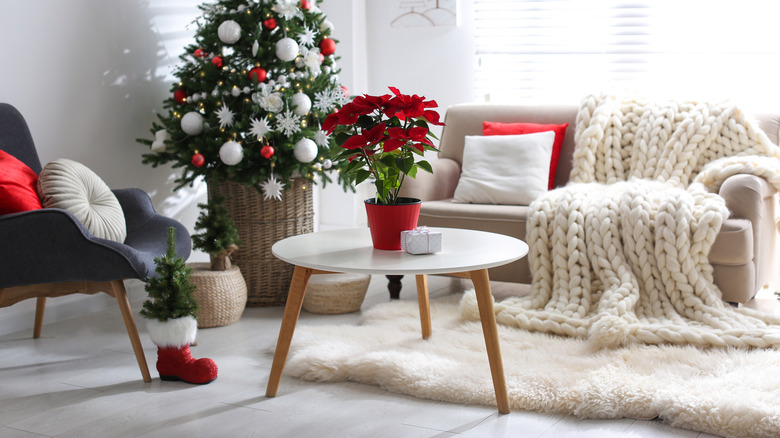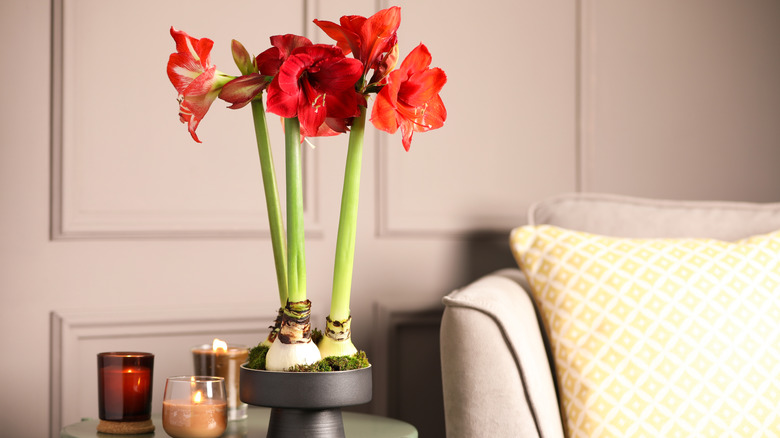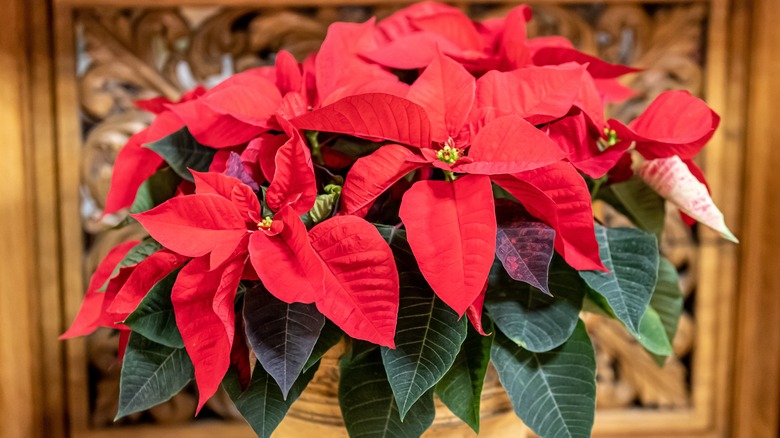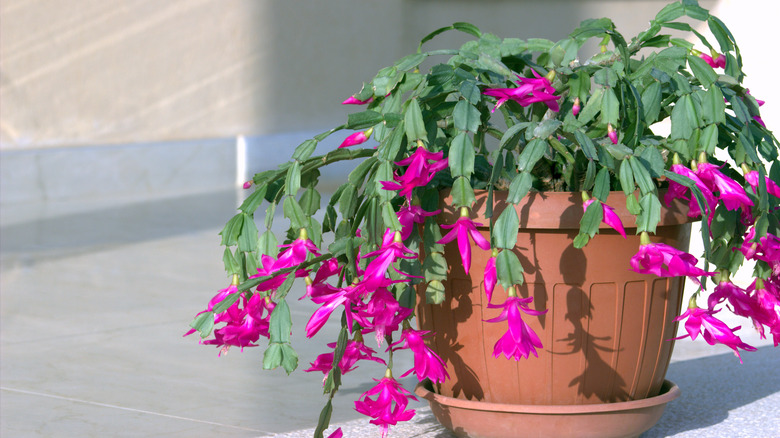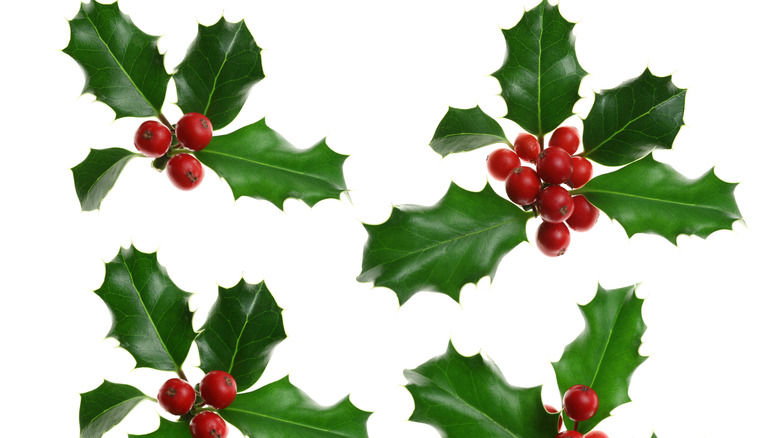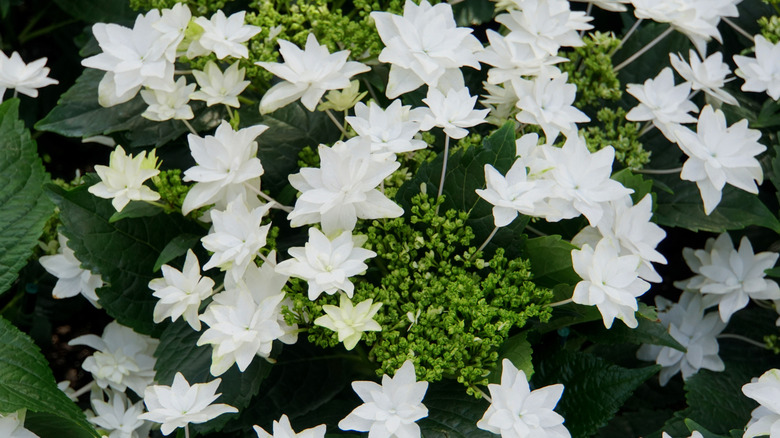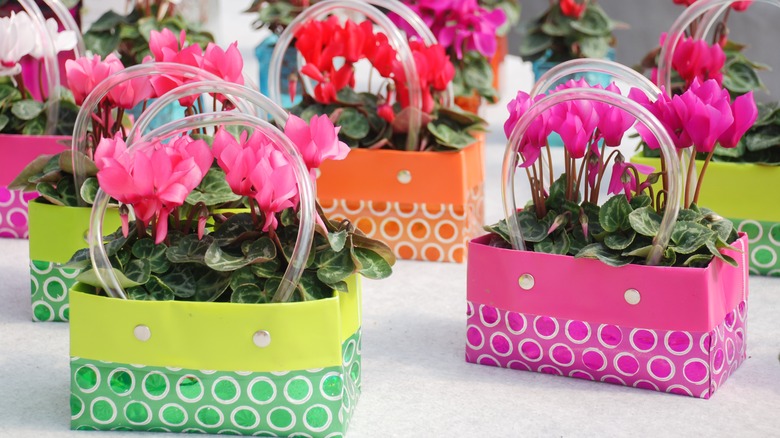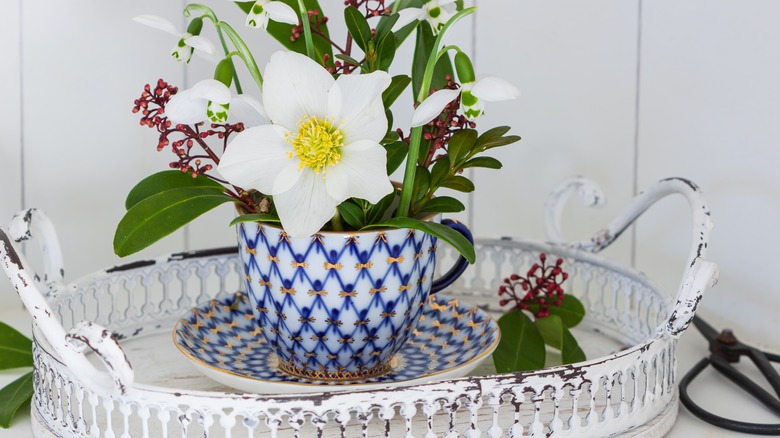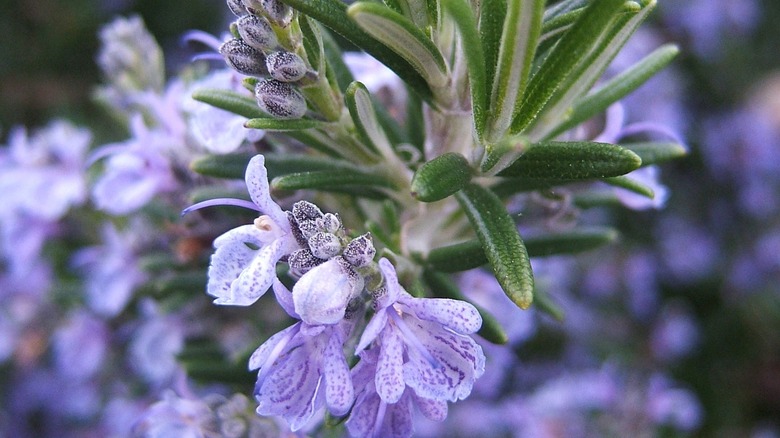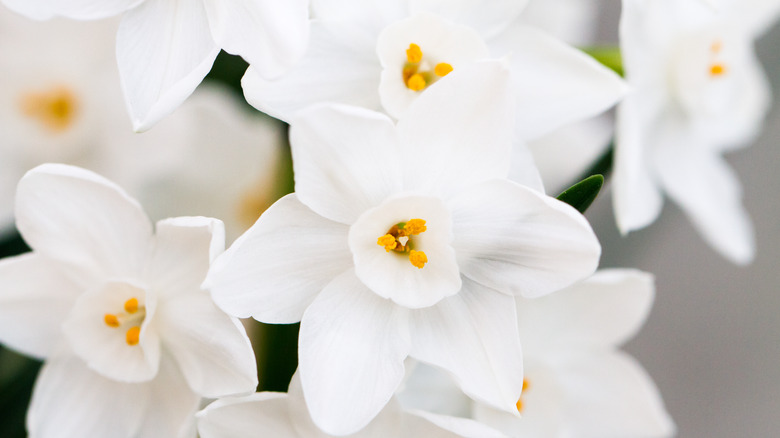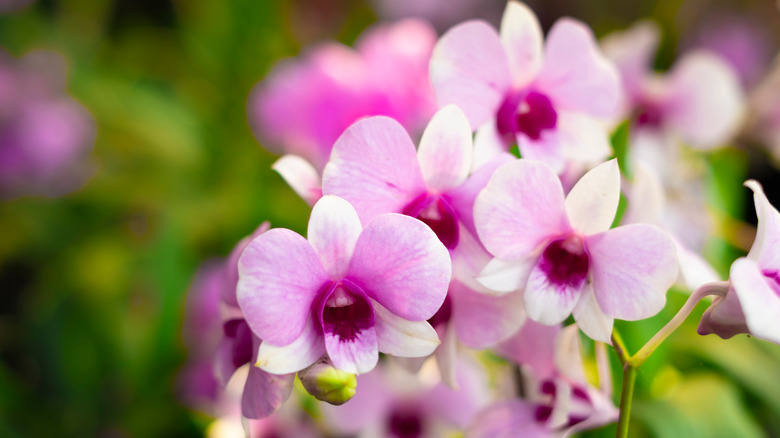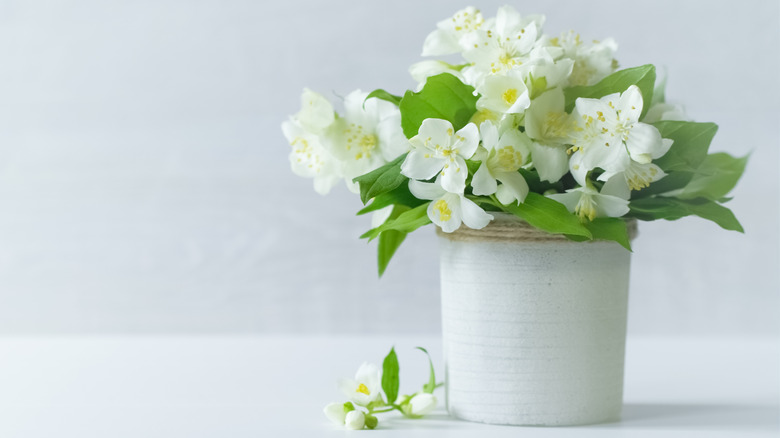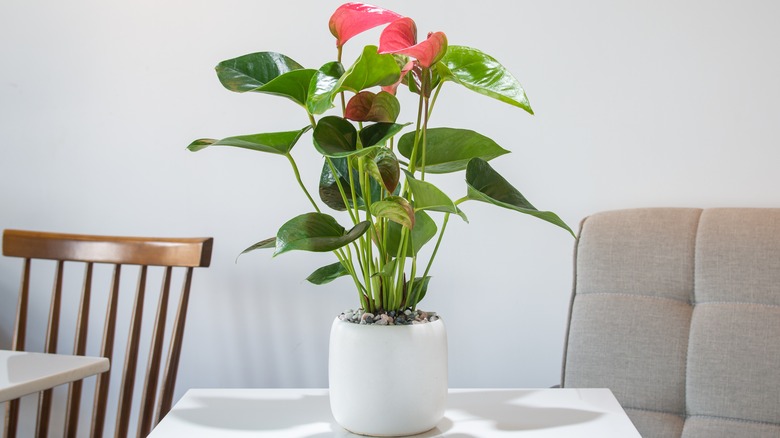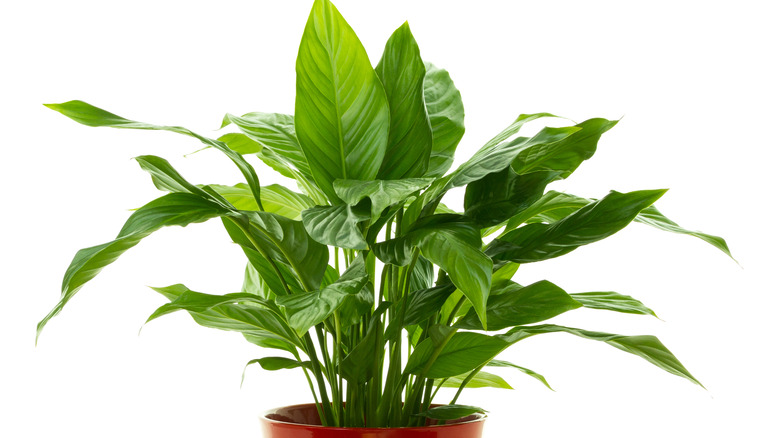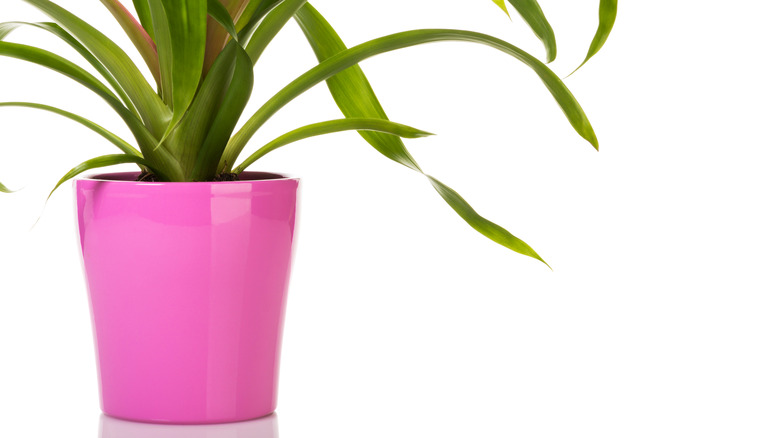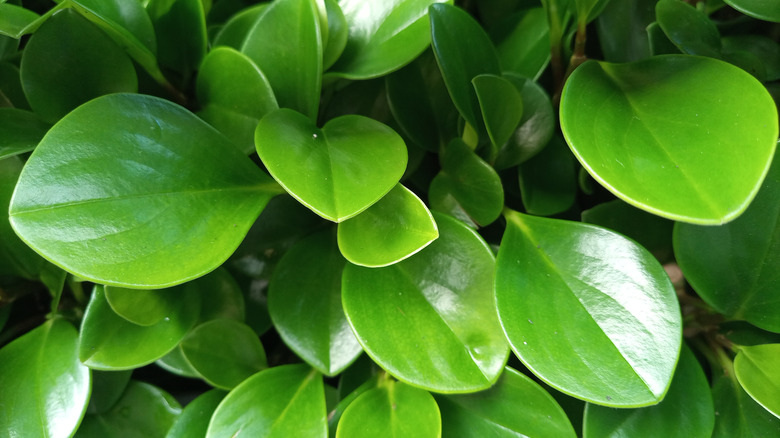15 Houseplants That Will Spice Up Your Holiday Decor
Holidays are the perfect time to take a few steps back into your comfort zone, unplug your body and mind from work overload, have a taste of new environments, bond with the people that matter the most, and live healthier. As such, it's important to revamp your home to match the festive vibes and prepare it for all the activities ahead. To that end, Peake Real Estate suggests decluttering and securing your home; stocking your pantry; organizing your refrigerators; and, for the sake of this article, planning your decor.
When planning your holiday decor, Setting for Four writes, choose your color scheme and theme wisely. If you're opting for bohemian beauty, elegant country, Scandinavian, or rustic theme, you can never escape bringing the outdoors indoors. And the good thing is, there's a lot to be achieved with decor plants: You can dress up your pots, hang light fixtures and ornaments on the plants, and even make festive stakes, as noted by Green Lady Garden. But it all boils down to choosing the right plants, and we found the 15 best houseplants for holiday home decoration.
Amaryllis
From Ferrari to Sweet Lillian, there are plenty of stunning varieties of amaryllis (Hippeastrum) you can use as decor. Amaryllis & Caladium Bulb Co. notes that they are easy-to-bloom flowering plants originating in the tropical regions of South America. To elevate your dining table with amaryllis during the festive period, Funny How Flowers Do That recommends stringing a handful of the flower stalks together, hanging them over the table, and mounting some on the walls.
Bloom Season: Late December, late June
USDA Growing Zone: 7b to 10
Growing Conditions: Sun and shade
Soil Type: Rich, well-drained soil
Size: 18 to 36 inches tall, 8 inches wide
Poinsettia
Poinsettias (Euphorbia pulcherrima) are ornamental plants native to Mexico. They have clusters of tiny yellow flowers and can be quite finicky about temperature. According to The Mercury News, they're known as Christmas Eve flowers in Mexico, and the legend is that they came to be when a little girl had nothing but weeds to give baby Jesus on Christmas. When she prayed at the altar, those weed plants changed into the first-ever poinsettias.
Bloom Season: Winter
USDA Growing Zone: 9 to 11
Growing Conditions: Full or partial sunlight (temperatures between 65 and 70 degrees F)
Soil Type: Moist soil
Size: 3 to 10 inches tall, 3 to 7 inches wide
Holiday cactus
Holiday cacti (Schlumbergera) are a group of three long-lived plants, namely the Christmas cactus, the Thanksgiving cactus, and the Easter cactus. The University of Minnesota Extension explains that they are planted for their ornamental flowers that bloom when the days become shorter in the winter. You can spruce up your holiday decor with hand-decorated pots of holiday cacti, as suggested by Ted Lare Design + Build.
Bloom Season: Late fall, mid-winter
USDA Growing Zone: 9 to 11
Growing Conditions: Moderate light and direct sun
Soil Type: Well-draining soil with a high proportion of organic matter
Size: 6 to 12 inches tall, 12 to 24 inches wide
Holly
Tree2MyDoor describes the holly shrub (Ilex aquifolium) as having grey, smooth trunks, glossy and spiky dark-green leaves, and bright red berries. These evergreen plants are synonymous with Christmas, and people have been "decking their halls" with them for centuries. Include these shrubs in your winter decor by hanging them around the fireplace or Christmas tree and making a holly wreath.
Bloom Season: Early spring, early summer
USDA Growing Zone: 5 to 9
Growing Conditions: Full sun or slightly shaded
Soil Type: Moist, well-drained loam, clay, or chalky
Size: 6 to 50 feet tall, 3 to 40 feet wide
Shooting star hydrangea
Shooting star hydrangea (Hydrangea macrophylla) is a deciduous shrub featuring white double-star-shaped flowers and mid-green leaves, per The Royal Horticulture Society. Other than being a great holiday decor, shooting star hydrangea also makes the perfect holiday gift, according to McDonald Garden Center.
Bloom Season: Early summer, early fall
USDA Growing Zone: 5 to 9
Growing Conditions: Partial or full sunlight
Soil Type: Moist but well-drained, slightly acidic
Size: 3 to 6 feet tall, 3 to 6 feet wide
Cyclamen
Britannica explains that cyclamen (genus Cyclamen) is a Middle Eastern and European native perennial flowering herb with kidney-shaped leaves, capsular fruits, and spiral-shaped flowers. OnMilwaukee suggests using it as a dressing for dinner tables, party favors, and centerpieces.
Bloom Season: Fall, winter, and spring
USDA Growing Zone: 5
Growing Conditions: Cool, humid environment
Soil Type: Well-drained, rich in humus
Size: 6 to 16 inches tall, 6 to 9 inches wide
Christmas rose or Easter rose
The Christmas rose (Helleborus niger) is a short perennial evergreen plant spotting clusters of capsulated fruits, showy cup-shaped flowers, and palmated dark-green leaves (via NC State Extension). It gets its name because it typically blooms around the holiday season. While it is ideal as an outdoor decor for patios and walkways, the Christmas rose is poisonous to humans and animals. Planters, beware!
Bloom Season: November to March
USDA Growing Zone: 3 to 8
Growing Conditions: Full shade
Soil Type: Moist, well-drained
Size: 8 to 12 inches tall, 12 to 18 inches wide
Rosemary
Learn Religion asserts that rosemary (Salvia rosmarinus) was historically used for incense by Roman priests during religious festivals and is associated with the goddess Aphrodite. By blending rosemary stems with melted paraffin candle wax, you can make DIY decorative Christmas candles that reek of exotic fragrance, Garden Guides notes.
Bloom Season: Late spring, early summer
USDA Growing Zone: 8 to 9
Growing Conditions: Full sun in warm, humid environments
Soil Type: Well-drained sandy soil
Size: 1 to 3 feet tall, 2 to 4 feet wide
Paperwhites
The paperwhite flower (Narcissus papyraceus) is everything you need to create a bouquet of beauties. According to Longfield Gardens, paperwhites, which are first onion-like bulbs in their seed stage, are winter-blooming ornamental plants that thrive both indoors and outdoors. To use paperwhites in your winter decor, you can grow them in vintage-style bowls as the Tattered Pew did.
Bloom Season: Winter
USDA Growing Zone: 8 to 11
Growing Conditions: Indirect sunlight
Soil Type: Well-drained soil
Size: 16 to 18 inches tall, 2 to 3 inches wide
Orchid
An orchid (Orchidaceae) is a symbol of fertility, thoughtfulness, charm, refinement, beauty, and love, per Welke's Milwaukee Florist. It can be positioned beside couches and matched with curtains and furniture of the same color, as noted by Art & Flower.
Bloom Season: Early spring
USDA Growing Zone: 6 to 9
Growing Conditions: Strong but not direct sunlight
Soil Type: Well-drained and acidic
Size: 8 to 36 inches tall, 8 inches wide
White Jasmine
Spread more love, sensuality, and beauty this festive season by lacing your windowsills with white jasmine (Jasminum polyanthum). According to Candide, white jasmine is a fast-growing, heavily-flowered climbing plant that is often grown to fill a garden or a room with its strong, sweet fragrance.
Bloom Season: Late winter, spring
USDA Growing Zone: 7b to 10
Growing Conditions: Full sun
Soil Type: Well-drained, moist, fairly fertile sandy-loamy soil
Size: 10 feet tall, 8 feet wide
Anthurium
Anthurium (Anthurium andraeanum) is a medium-maintenance tropical perennial that's native to Colombia, the windward islands, Ecuador, and the Venezuela Antilles. Missouri Botanical Garden said it has durable, creamy-yellow flowers and heart-shaped dark green leaves that make it the perfect houseplant. Plus, it will bloom year round.
Bloom Season: All year round
USDA Growing Zone: 11 to 12
Growing Conditions: Partial shade
Soil Type: Coarse, well-drained acidic soil
Size: 1 to 1.5 feet tall, 1 foot wide
Peace lily
The Peace lily (Spathiphyllum) is one of the easiest-to-care-for houseplants from the Araceae plant family. The Week disclosed that it's used for preventing mildew growth and enhancing restful sleep, and it also makes a good addition to home decor, especially when planted in a decorative pot.
Bloom Season: Spring, fall
USDA Growing Zone: 11 to 12
Growing Conditions: Low light and direct sunlight
Soil Type: Moist and well-drained
Size: 2 to 3 feet tall, 1 to 4 feet wide
Bromeliads
Bromeliads (Bromeliaceae) are slow-growing epiphytes that can also be grown on their own as houseplants. According to the University of Florida Extension, when using bromeliads as decor, it's best to place them around the windows or on the porch, where they can receive full and diffused sunlight.
Bloom Season: All year round
USDA Growing Zone: 9 to 10
Growing Conditions: Bright indirect sunlight
Soil Type: Fast-draining soil with high water-holding capacity
Size: 2 to 3 feet tall, 1 to 3 feet wide
Baby rubber plant
Also known as "pepper face" and "string of turtle," the baby rubber plant (Peperomia spp.) is an easy-care indoor plant that is often with waxy, thick leaves, according to Planterina. They thrive in higher humidity and can add a burst of greenery to your home during the dreary winter months.
Bloom Season: Summer
USDA Growing Zone: 10
Growing Conditions: Full sun or partial shade
Soil Type: Moist but well-drained
Size: 8 to 12 inches tall, 6 to 12 inches wide
